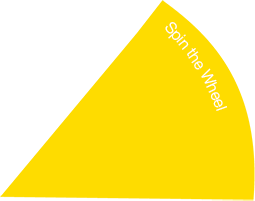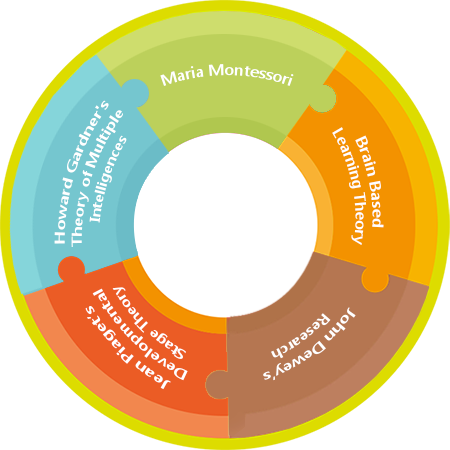Theories we follow



Maria Montessori
Developed by Dr. Maria Montessori, it can be described as a constructivist or "discovery" model, where children learn concepts from working with materials, rather than by direct instruction. The role of the teacher is to stimulate the child's enthusiasm for learning and to guide it, without interfering with the child's natural desire to teach him/herself and become independent.
Howard Gardner's Theory of Multiple Intelligences
Multiple Intelligences,(MI), is a theory introduced in 1983 by Harvard professor Dr. Howard Gardner which says that there are many forms of intelligences and many ways to be smart. Our schools and culture focus most of their attention on linguistic and logical-mathematical intelligence but in fact educators should recognize a broader range of talents. Some children might learn rhymes better by reading (linguistic) but some need to dance to it (kinesthetic). The same material should be reinforced in a variety of ways as it activates a wide assortment of intelligences and this in turn facilitates a deeper understanding of the subject matter.
Summaries of eight intelligences
- Visual/Spatial - Picture Smart
- Linguistic - Word Smart
- Logical/Mathematical
- Bodily/Kinesthetic
- Musical
- Interpersonal People Smart
- Intrapersonal Self Smart
- Naturalist
Jean Piaget’s Developmental Stage Theory
The understanding that the children are active learners and the way they understand develops as they interact with the world around them.
John Dewey’s Research
John Dewey is famous for his role in what is called progressive education which is essentially a view of education that emphasizes the need to learn by doing. Children learn best when they experience reality
Brain-based learning Theory
This learning theory is based on the structure and function of the brain. Teaching without an awareness of how the brain learns is like designing a glove with no sense of what a hand looks like–its shape, how it moves. To make learning effective, the teaching method and the classrooms have to be designed, by understanding and accommodating “the organ of learning,” the brain.

